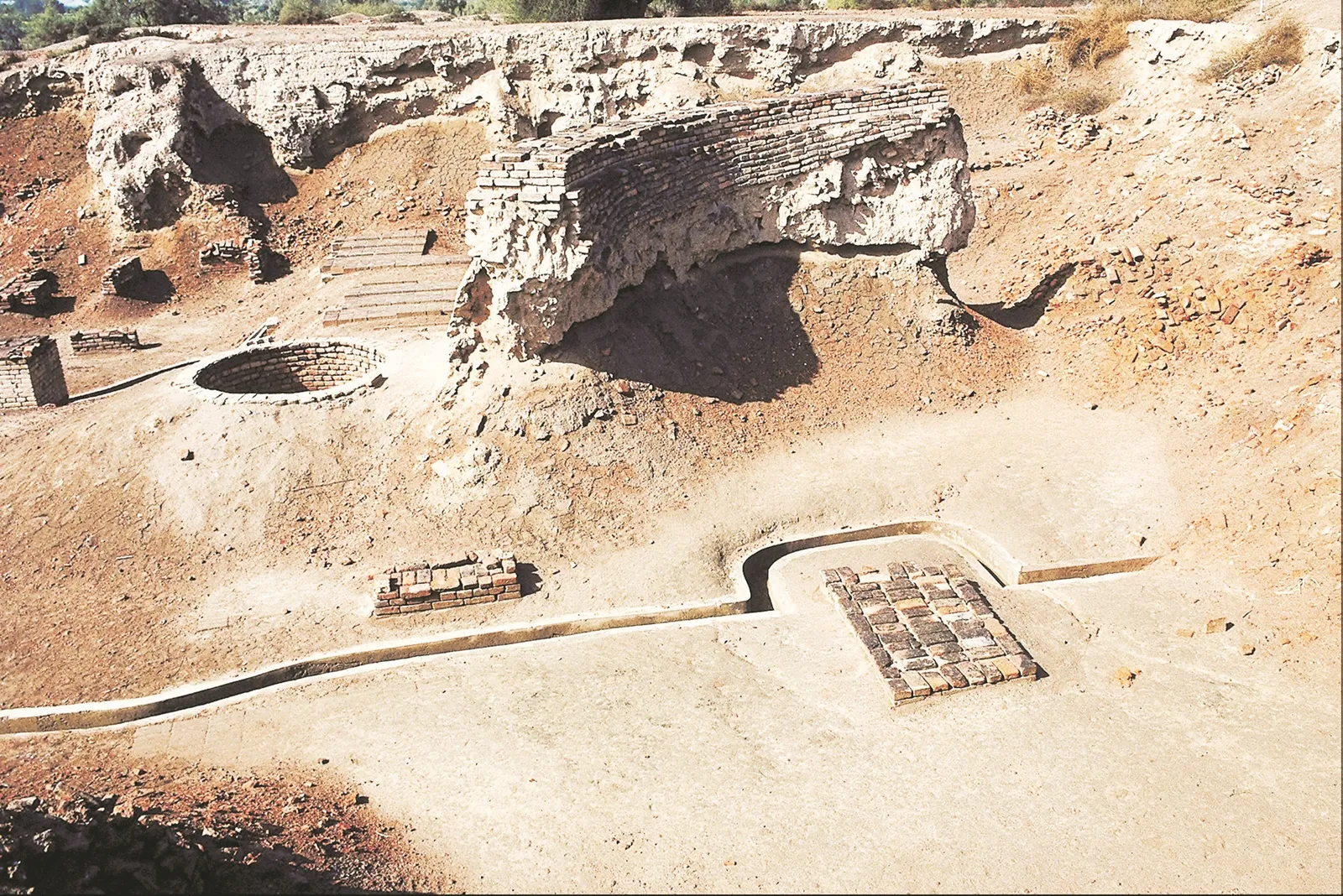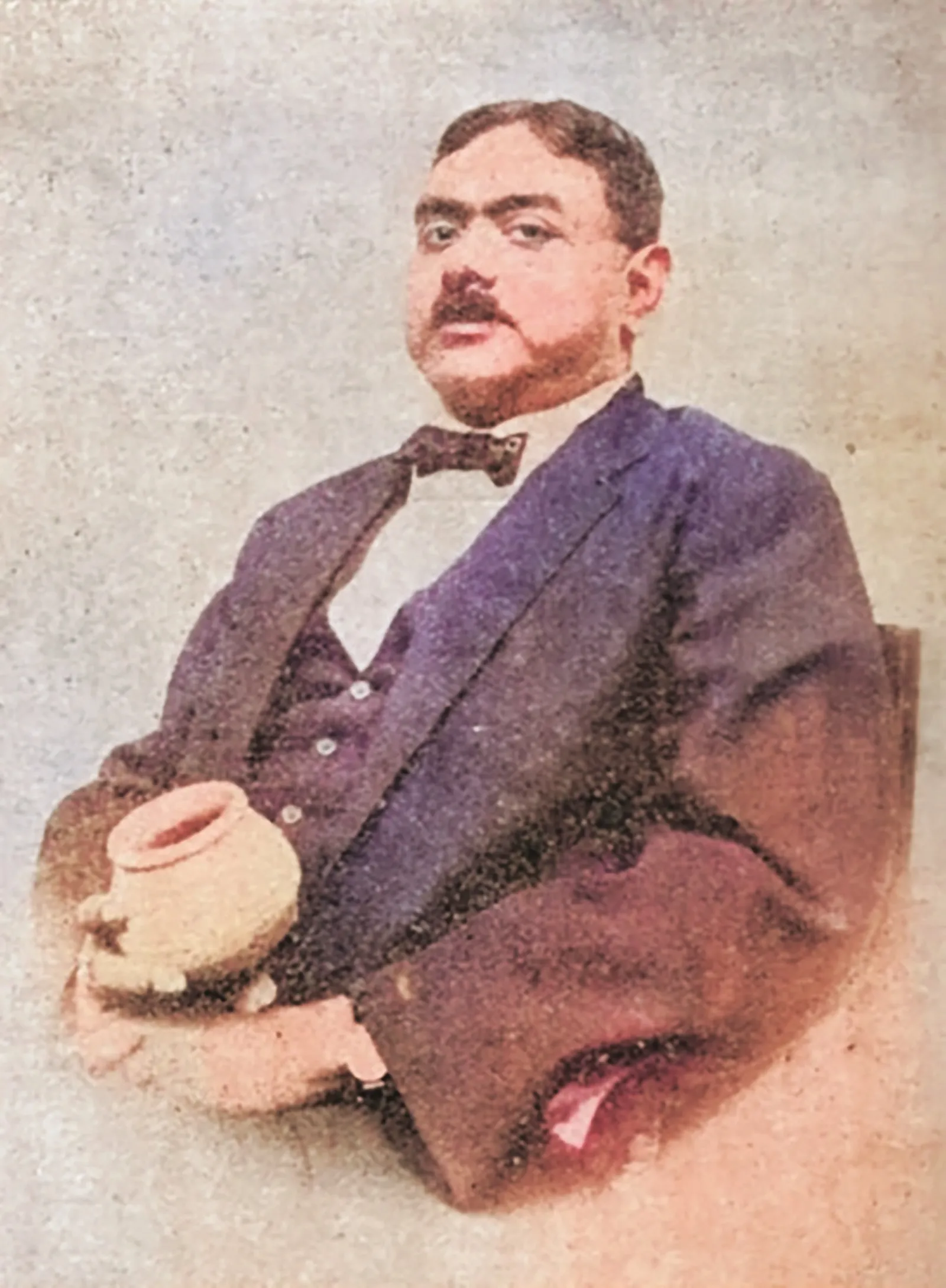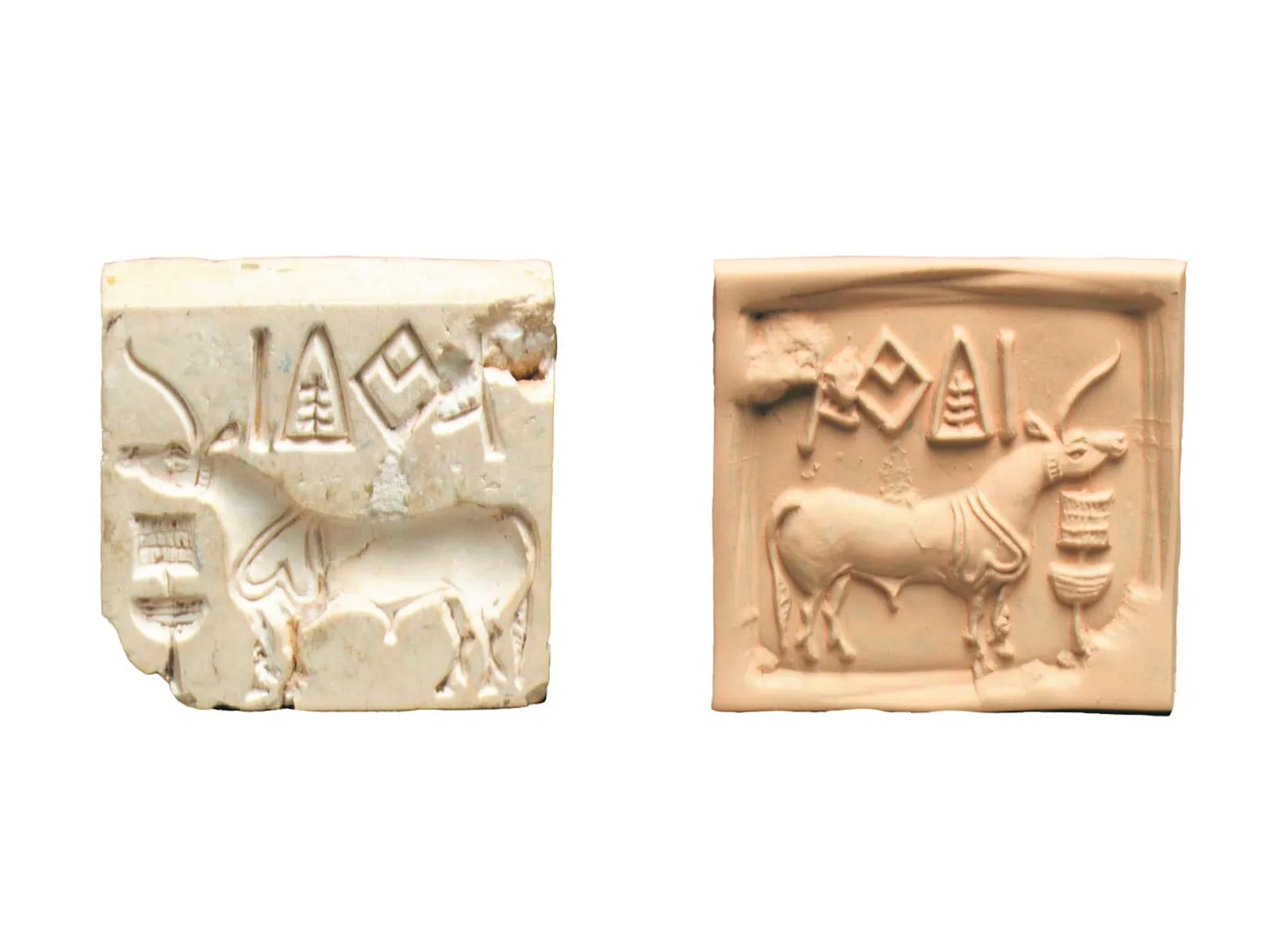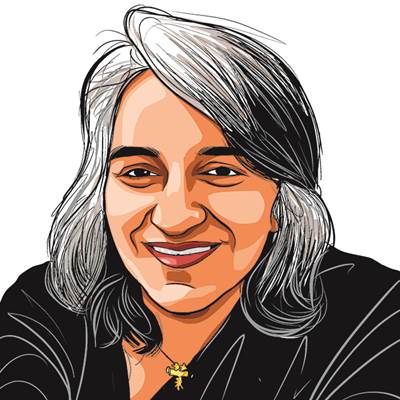How do great discoveries take place and what can we learn — a century later — by juxtaposing the 1924 discovery of the Indus Civilisation with them? I became interested in the process of scientific discoveries in order to understand if an archaeological tale of discovery shares features with other such histories. One common element that struck me was the idea of ‘the slow hunch’ in Steven Johnson’s bestseller, Where Good Ideas Come From (2010). The pathways through which fuzzy intuitions can develop into big ideas are well described in this work.
Among its case studies is one that focuses on Joseph Priestley who, in deciding to seal a sprig of mint in glass (to prove that plants create oxygen), was building upon an insight that went back to his boyhood. The young Priestley had apparently trapped spiders in glass jars in the belief that “there was something that was interesting in the way that organisms perished when you sealed them in closed vessels, something that pointed to the larger truth”. He kept this hunch alive and eventually it yielded fruit, some two decades later.
 John Marshall, the director-general of the Archaeological Survey of India in 1902, who revealed the Indus Civilisation to the world over a century ago; (Source: Wikimedia Commons)
John Marshall, the director-general of the Archaeological Survey of India in 1902, who revealed the Indus Civilisation to the world over a century ago; (Source: Wikimedia Commons)
The Slow Hunch
Priestley’s slow-burn build-up around an early inkling appears to strongly echo John Marshall’s sense of the possibility of pushing back the antiquity of India — an idea that incubated in his mind some 22 years before. Marshall came to India as director-general of the Archaeological Survey of India (ASI) in 1902. His preparations for work in India included an examination of many objects of Indian origin in England, including three British Museum seals from Harappa, inscribed in an unknown script. These seals took nearly a quarter of a century to flower as the discovery of an entire civilisation — a classic case of the slow hunch being worth nursing.
But there was more to it. Marshall felt the need to follow up on his sixth sense. He deputed Hirananda Sastri in 1903. Sastri was the ‘pundit in charge’ of the ASI’s office in Punjab. He was sent to survey three sites in the Ganga–Yamuna Doab region, which had yielded copper objects in the form of hoards (tools). Marshall saw the copper hoard objects as belonging to an age of bronze which, he believed, could be correlated with what was then termed the Early Vedic Age.
Today, such copper hoards are considered roughly contemporary with Harappan times; a century ago, their age was a mystery. It continued so because nothing was unearthed by Sastri that allowed Marshall to specifically suggest archaeological scaffolding for a very ancient cultural phenomenon. Yet it is obvious that, as early as 1903, the prism through which Marshall viewed the Indian past was one that accommodated such a notion. When I first wrote about the field work done on Marshall’s orders, I had not expanded the canvas to reveal how gradual clarity — in this case about a literate ‘Bronze Age’ — was also the hallmark of several scientific breakthroughs and innovations.
At the same time, in this case, the slow pace was partly a consequence of the constraints within which field research was done in British India, where non-commercial departments worked on very small budgets. Marshall himself was keen to excavate Harappa as early as 1907 but the price for acquiring the mounds was beyond the budget of the ASI.
 A Harappan site (Source: Wikimedia Commons)
A Harappan site (Source: Wikimedia Commons)
Circumstances unrelated to archaeology that put Harappa’s excavation on the back burner are also discernible in other directions. In 1914, a senior officer of the ASI, Harold Hargreaves, prepared a report on Harappa in which he recommended that they be excavated. Following this report, Marshall asked the civil authorities in Montgomery District (present-day Sahiwal in Pakistan), where Harappa was located, to arrange with the landowners for a temporary occupation of their fields so that excavations could begin in the subsequent year. But they could not begin: now, it was the start of World War I that resulted in a moratorium on new excavations, the financial crunch made worse by manpower shortages. The dilatory follow-up was also a consequence of unavoidable material circumstances.
Individuals who made the discovery possible
Moving on to the years when Harappa and Mohenjodaro first came to be excavated, my book revealed that the clues, which eventually led to the knowledge that these represented India’s first civilisation, were neither discovered by a single solitary scholar nor were found all at once. Philosopher Thomas Kuhn’s 1962 classic, The Structure of Scientific Revolutions, and his paper on the historical structure of scientific discovery have demolished the earlier notion of discoveries as unitary occurrences. As he put it, “There is no single moment or day which the historian, however, complete his data, can identify as the point at which the discovery was made. Often, when several individuals are involved, it is even impossible unequivocally to identify any of them as the discoverer.” This insight helps us understand Marshall’s long suspicion of Harappa’s early antiquity.
The suspicion worked as a baton — it was handed over to Daya Ram Sahni, the archaeologist, who actually found the evidence for an early culture at Harappa in a dig he conducted in 1921. It also needs to be appreciated that a similar process unfolded in Mohenjodaro, on which there was neither a slow hunch nor any kind of precognition that an excavation which began there in December 1922 would yield dramatic evidence.
 Rakhaldas Banerji, considered an important protagonist in the story of the Indus discovery
Rakhaldas Banerji, considered an important protagonist in the story of the Indus discovery(Source: Wikimedia Commons)
Mohenjodaro’s unearthing, unlike the Harappa excavations, had nothing to do with Marshall’s planning. For many years, Rakhaldas Banerji, who headed the Western Circle of the ASI, had been keen to excavate it, believing it an important Buddhist site, when he went off to dig it up in the winter of 1922. Naturally, he began concentrating on the stupa site and it was there that his assistant, NS Chikte, made the momentous discovery of two inscribed seals. Banerji realised immediately that these were inscribed with characters similar to those on the Harappa seals. Mohenjodaro, though, was several hundred kilometres to the south-west of Harappa, which meant that this was an entire distinctive culture spread over a considerable region. It was for this reason that Banerji would always be considered an important protagonist in the story of the Indus discovery.
In the world of science, it is fairly commonplace to speak of the initial discovery as more or less synonymous with a chance finding or unexpected occurrence. This is certainly true of Banerji’s discovery at Mohenjodaro. But a lot depends on the discoverer’s capacity for following up on an unexpected revelation.
Scientists, for instance, in building experiments, frequently capture unknown and unexpected processes. They then attend to the results, to giving explanations, and to supporting them with analogies of very similar results obtained in other experiments. Then, if unexpected results continue despite changes in methodology, they form new models and theories. If this kind of process is juxtaposed with matters as they unfolded after the discovery of the Mohenjodaro seals, it is evident that Banerji was hesitant to visualise a new framework on the basis of what had emerged. His search for its cultural connections eventually boiled down to finding a place for the seal makers within the early spread of races. This approach was one that was unlikely to lead to a better understanding of the significance of Mohenjodaro.
 Mohenjodaro was several hundred kilometres to the south-west of Harappa, which meant that this was an entire distinctive culture spread over a considerable region.
Mohenjodaro was several hundred kilometres to the south-west of Harappa, which meant that this was an entire distinctive culture spread over a considerable region.
Lacuna in ASI
Beyond individuals, there was an important institutional lacuna in the ASI. The organisation had no space for discussing ongoing research. This differs from the situation that normally prevails among experimental scientists, where laboratory meetings are thought to be extremely common. One of the consequences of this is that it leads from the particular to the general, allowing researchers frequently to persuade each other to consider alternative representations and explanations for data that is being examined or a theory being opposed.
By contrast, the colonial ASI showed no institutional space for brainstorming, no “common room” for archaeologists to discuss their digs and share information about each other’s field work. It is unlikely, for instance, that Sahni and Banerji ever visited Harappa and Mohenjodaro together or that they discussed their findings. Mostly, what seems to have been common to them was the intermediary figure of Marshall, to whom they addressed their letters and queries.
 The reception of new knowledge in London on Indus materials, having circulated among scholars with experience of ancient scripts and sites in Asia, confirms the importance of making information accessible to all who might add nuance or new dimensions to it.
The reception of new knowledge in London on Indus materials, having circulated among scholars with experience of ancient scripts and sites in Asia, confirms the importance of making information accessible to all who might add nuance or new dimensions to it.
As for Marshall himself, even after learning about the discovery of the Mohenjodaro seals in March 1923, he took his time coming to grips with the new evidence. In April that year, he left for England on a long-planned furlough. When he returned to India, he visited neither Mohenjodaro nor Harappa and instead proceeded to Taxila, the city he had excavated for over two decades.
In this, he was following a routine to which he had religiously adhered since he began digging there. Beginning with 1913, he had spent practically every spring and autumn slowly and laboriously uncovering its magnificent monuments. His finds ranged from coins and pottery to architectural forms — a lot of which he felt was Hellenistic in inspiration. For a man whose training was in classical archaeology, such elements were enormously alluring and worth exploring over a period of time.
At the same time, Marshall knew that, by any standards, the field season of 1923–24 was an unusual one: it was on his instructions that Harappa and Mohenjodaro were being trenched in quick succession. It seems nearly incomprehensible, then, for him not to have broken his practice to get a first-hand glimpse of the digs he had ordered. Perhaps, this has to be seen as being perfectly in character since he tended to be resolutely focused on tasks that needed to be finished, but the fact remains that had he been less rigidly disciplined about his own priorities, the discovery of the Indus Civilisation would have unfolded sooner than the autumn of 1924.
Since Marshall had not seen the sites for himself and his subordinates had no forum for discussions that could have led to a new perspective on the newly discovered evidence, what exactly alerted Marshall to their singularity?
The answer lies in a letter that a junior officer, Madho Sarup Vats, wrote to him: the letter seems to have pushed him to get to grips with the enigma of Mohenjodaro and Harappa. In April 1924, Vats had just completed a four-week season of excavation at Mohenjodaro. In his letter, he pointed out similarities between the two cities. The resemblance in the seals apart, Vats pointed to likenesses in flint scrapers, terracotta figurines, sling balls, earthen bangles, and even the size of bricks.
Upon receiving this letter, Marshall assembled his archaeologists and the excavated material to his head office in Shimla: it was the first formal occasion for those involved in the discoveries to meet, and out of this meeting the article that announced the discovery of the Indus Civilisation was prepared and published on September 20, 1924.
 A modern impression of a stamp seal (left) and its original (right), at the Metropolitan Museum of Art (Source: Wikimedia Commons)
A modern impression of a stamp seal (left) and its original (right), at the Metropolitan Museum of Art (Source: Wikimedia Commons)
Announcing the Discovery
Marshall opened his account of the discovery with flair and imagination. His words impart a strong sense of occasion: ‘Not often has it been given to archaeologists, as it was given to Schliemann at Tiryns and Mycenae, or to Stein in the deserts of Turkestan, to light upon the remains of a long-forgotten civilization. It looks, however, at this moment, as if we were on the threshold of such a discovery in the plains of the Indus’.
The architectural remains were elucidated there from brick buildings to water conduits with sumptuous photographs of the smaller antiquities. More than anything else, these allowed readers to imagine the articles that the ancient people of the Indus used in their everyday lives — various sorts of jars as also one that served as a funerary urn; terracottas with elaborate head-dresses ‘recalling the medieval fashions in Europe’ and ‘similar to some found at Patna, in Bihar’; spectacular steatite and stone seals.
 The Dancing Girl, bronze sculpture from Mohenjodaro
The Dancing Girl, bronze sculpture from Mohenjodaro(Source: Wikimedia Commons)
The editors of the Illustrated London News explained that, at Marshall’s suggestion, they had published all the photographs of seals so ‘that there may be a greater chance of any of our expert readers helping to elucidate the script’. That the free flow of ideas and opinions from elsewhere is an imperative in discovery contexts was borne out by what followed Marshall’s announcement on the Indus Civilisation.
Several scholarly British readers of the Illustrated London News reacted instantaneously. Among these was a linguist, Archibald Henry Sayce, who dashed off a note which appeared in the news magazine on September 27, suggesting that the Indus finds were even more remarkable and startling than Marshall had supposed. Sayce pointed out that seals of the Indus type had been discovered at Susa (in present-day Iran) in a context dated to the third millennium BCE. ‘It is evident,’ said Sayce, ‘that as far back as the third millennium BCE, there was intercourse between Susa and (the) North-West of India.’ The discovery, he argued, ‘opens up a new historical vista, and is likely to revolutionize our ideas of the age and origin of the Indian civilization.’
The reception of new knowledge in London on Indus materials, having circulated among scholars with experience of ancient scripts and sites in Asia, confirms the importance of making information accessible to all who might add nuance or new dimensions to it. This has an important lesson for our contemporary scenario, where rather than seeking insights from a transnational perspective, research findings are being tailored to suit the narrow political agenda of the state.
Nayanjot Lahiri is Professor of History at Ashoka University. Her book Finding Forgotten Cities – How the Indus Civilization was Discovered (2015) has a new afterword in the centenary year. The views expressed here are her own







